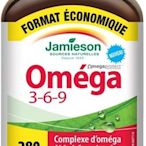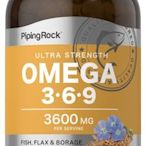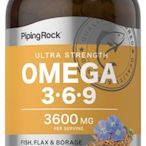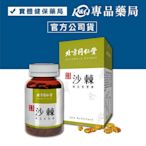搜尋結果
 $1050【Piping Rock】Omega 3-6-9 魚油-亞麻籽油-琉璃苣油 240顆我的健康食品 MY HEALTH FOOD
$1050【Piping Rock】Omega 3-6-9 魚油-亞麻籽油-琉璃苣油 240顆我的健康食品 MY HEALTH FOOD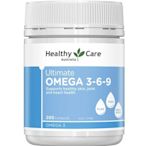 $790代購澳洲 Healthy Care Omega 3-6-9 (200顆)Double Sister
$790代購澳洲 Healthy Care Omega 3-6-9 (200顆)Double Sister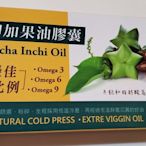 $320100%印加果油膠囊 30粒/500毫克 具有養顏美容 調整體質之作用 含omega-3.6.9 效期202507Y0881306916
$320100%印加果油膠囊 30粒/500毫克 具有養顏美容 調整體質之作用 含omega-3.6.9 效期202507Y0881306916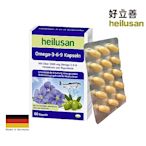 $329德國 好立善 Omega 3-6-9 必需脂肪酸 魚油+亞麻仁油+月見草油 (60粒)購物中心
$329德國 好立善 Omega 3-6-9 必需脂肪酸 魚油+亞麻仁油+月見草油 (60粒)購物中心![♚夏夏海外精品♚HB英國荷柏瑞深海魚油120粒omega-3-6-9 ♚夏夏海外精品♚HB英國荷柏瑞深海魚油120粒omega-3-6-9]() $1350♚夏夏海外精品♚HB英國荷柏瑞深海魚油120粒omega-3-6-9♚夏夏海外精品♚
$1350♚夏夏海外精品♚HB英國荷柏瑞深海魚油120粒omega-3-6-9♚夏夏海外精品♚![小紫瓶🌿天然Omega-3-6-9亞麻籽油🌿180粒 小紫瓶🌿天然Omega-3-6-9亞麻籽油🌿180粒]() $780小紫瓶🌿天然Omega-3-6-9亞麻籽油🌿180粒德國生活百貨
$780小紫瓶🌿天然Omega-3-6-9亞麻籽油🌿180粒德國生活百貨![現貨! Jamieson OmegaProtect Omega 3-6-9 - Value Size 加大包裝280顆 現貨! Jamieson OmegaProtect Omega 3-6-9 - Value Size 加大包裝280顆]() $1050現貨! Jamieson OmegaProtect Omega 3-6-9 - Value Size 加大包裝280顆The Beauty Bar 漂亮吧!
$1050現貨! Jamieson OmegaProtect Omega 3-6-9 - Value Size 加大包裝280顆The Beauty Bar 漂亮吧!![德國 好立善 Omega 3-6-9 必需脂肪酸 魚油+亞麻仁油+月見草油 (60粒/盒)(效期2025/03/31) 德國 好立善 Omega 3-6-9 必需脂肪酸 魚油+亞麻仁油+月見草油 (60粒/盒)(效期2025/03/31)]() $250德國 好立善 Omega 3-6-9 必需脂肪酸 魚油+亞麻仁油+月見草油 (60粒/盒)(效期2025/03/31)Y6959722090
$250德國 好立善 Omega 3-6-9 必需脂肪酸 魚油+亞麻仁油+月見草油 (60粒/盒)(效期2025/03/31)Y6959722090![【活力小站】Piping Rock Omega 3-6-9 魚油-亞麻籽油-琉璃苣油 240顆 【活力小站】Piping Rock Omega 3-6-9 魚油-亞麻籽油-琉璃苣油 240顆]() $1050【活力小站】Piping Rock Omega 3-6-9 魚油-亞麻籽油-琉璃苣油 240顆Y5125069859
$1050【活力小站】Piping Rock Omega 3-6-9 魚油-亞麻籽油-琉璃苣油 240顆Y5125069859![【天然小舖】Piping Rock Omega 3-6-9 魚油-亞麻籽油-琉璃苣油 240顆 【天然小舖】Piping Rock Omega 3-6-9 魚油-亞麻籽油-琉璃苣油 240顆]() $1050【天然小舖】Piping Rock Omega 3-6-9 魚油-亞麻籽油-琉璃苣油 240顆Y8850095926
$1050【天然小舖】Piping Rock Omega 3-6-9 魚油-亞麻籽油-琉璃苣油 240顆Y8850095926![德國 好立善 Omega 3-6-9 必需脂肪酸 魚油+亞麻仁油+月見草油 3入組 (60粒x3盒) 德國 好立善 Omega 3-6-9 必需脂肪酸 魚油+亞麻仁油+月見草油 3入組 (60粒x3盒)]() $850德國 好立善 Omega 3-6-9 必需脂肪酸 魚油+亞麻仁油+月見草油 3入組 (60粒x3盒)購物中心
$850德國 好立善 Omega 3-6-9 必需脂肪酸 魚油+亞麻仁油+月見草油 3入組 (60粒x3盒)購物中心![北京同仁堂 黃金聖果沙棘籽油軟膠囊 (胡蘿蔔素 維他命C Omega 3、6、9) 60粒/瓶 專品藥局【2028617】 北京同仁堂 黃金聖果沙棘籽油軟膠囊 (胡蘿蔔素 維他命C Omega 3、6、9) 60粒/瓶 專品藥局【2028617】]() $1620北京同仁堂 黃金聖果沙棘籽油軟膠囊 (胡蘿蔔素 維他命C Omega 3、6、9) 60粒/瓶 專品藥局【2028617】【專品藥局】P&Q實體店面
$1620北京同仁堂 黃金聖果沙棘籽油軟膠囊 (胡蘿蔔素 維他命C Omega 3、6、9) 60粒/瓶 專品藥局【2028617】【專品藥局】P&Q實體店面
其他人也問了
What are omega-3 fatty acids?
What is the ratio of omega-6 to omega-3 fatty acids?
What are the side effects of omega-3 fatty acids?
Is inflammation a tightrope walk between omega-6 and omega-3 fatty acids?
Chemical structure of α-linolenic acid (ALA), a fatty acid with a chain of 18 carbons with three double bonds on carbons numbered 9, 12, and 15. The omega (ω) end of the chain is at carbon 18, and the double bond closest to the omega carbon begins at carbon 15 = 18−3. Hence, ALA is a ω− 3 fatty acid with ω = 18.
Omega−3 fatty acids are important for normal metabolism. [2] Mammals are unable to synthesize omega−3 fatty acids, but can obtain the shorter-chain omega−3 fatty acid ALA (18 carbons and 3 double bonds) through diet and use it to form the more important long-chain omega−3 fatty acids, EPA (20 carbons and 5 double bonds) and then from EPA, the most crucial, DHA (22 carbons and 6 double ...
- Eicosanoid Series Nomenclature
- Arachidonic Acid Cascade in Inflammation
- The Arachidonic Acid Cascade in The Central Nervous System
- Further Discussion
- See Also
Eicosanoids are signaling molecules derived from the essential fatty acids (EFAs). They are a major pathway by which the EFAs act in the body. There are four classes of eicosanoid and two or three series within each class. The plasma membranes of cells contain phospholipids, composed of a hydrophilic phosphate head and two hydrophobic fatty acid ta...
In the arachidonic acid cascade, dietary linoleic acid (18:2 ω-6) is desaturated and elongated to form arachidonic acid (and other omega-6 acids), which is then esterified into a phospholipid in the cell membrane. Next, in response to many inflammatory stimuli, such as air pollution, smoking, second-hand smoke, hydrogenated vegetable oils, and othe...
The arachidonic acid cascade proceeds somewhat differently in the central nervous system (CNS). Neurohormones, neuromodulators, or neurotransmitters act as first messengers. They activate phospholipids to release AA from neuron cell membranes as a free fatty acid.[citation needed] During its short lifespan, free AA may affect the activity of the ne...
Figure 2 shows two pathways from EPA to DHA, including the exceptional Sprecher's shunt. 5-LO acts at the fifth carbon from the carboxyl group.Other lipoxygenases—8-LO, 12-LO, and 15-LO—make other eicosanoid-like products.To act, 5-LO uses the nuclear-membrane enzyme 5-lipoxygenase-activating protein (FLAP), first to a hydroperoxyeicosatetraenoic a...
Fish oil is oil derived from the tissues of oily fish. Fish oils contain the omega-3 fatty acids eicosapentaenoic acid (EPA) and docosahexaenoic acid (DHA), precursors of certain eicosanoids that are known to reduce inflammation in the body and improve hypertriglyceridemia.
Fatty acid ratio in food. Only two essential fatty acids are known to be essential for humans: alpha-linolenic acid (an omega-3 fatty acid) and linoleic acid (an omega-6 fatty acid ). [1] The biological effects of the ω-3 and ω-6 fatty acids are mediated by their mutual interactions.
Omega-3 carboxylic acids [1] ( Epanova) is a formerly marketed yet still not an Food And Drug Administration (FDA) approved prescription medication–since taken off market by the manufacturer–used alongside a low fat and low cholesterol diet that lowers high triglyceride (fat) levels in adults with very high levels. [2]
D05255. Omega-3-acid ethyl esters are a mixture of ethyl eicosapentaenoic acid and ethyl docosahexaenoic acid, which are ethyl esters of the omega-3 fatty acids eicosapentaenoic acid (EPA) and docosahexaenoic acid (DHA) found in fish oil. [3] Together with dietary changes, they are used to treat high blood triglycerides which may reduce the ...


